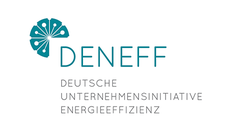Search eceee proceedings
Reverse electrodialysis heat-engine: Case studies of improving energy efficiency through recovery of low temperature excess heat
Panel: 4. Technology, products and system optimisation
This is a peer-reviewed paper.
Authors:
Michail Papapetrou, WIP-Renewable Energies, Germany
George Kosmadakis, WIP Renewable Energies, Germany
Abstract
Reverse Electrodialysis (RED) is a technology for generating electricity from the difference in salinity between two streams of water. RED is usually applied to natural water streams with different salinities, like seawater vs. freshwater. In the RED Heat-to-Power project we explore the option of using artificial water solutions operating in a closed loop where the difference in salinity is regenerated in a separation step powered by heat at temperature ranges between 60 and 100oC.. We call this system Reverse Electrodialysis Heat Engine (RED-HE).
In this paper, first we summarise the possible system configurations and the overall amount of excess heat available in Europe for powering the RED-HE process, as described in our previous publications. Then we take a closer look at specific sites, where a RED-HE engine could be potentially applied, assessing the amount of waste heat that can be technically and realistically recovered and sizing the RED HE system for those applications.
The case studies we have performed include the excess heat recovery from:
1) a typical large-sized pulp and paper industry based in Sweden
2) a typical medium-sized food industry as described within the IEE project GREENFOODS
3) a relatively large biogas plant in Germany
4) the on-board auxiliary engine of a medium-sized bulk carrier
5) a gas compressor station in Poland.
The results are discussed and generalised, showing that the RED-HE and other technologies that can convert low temperature heat to power are suitable in all those sectors. For most cases, the typical applications would be of relatively small size, because of the Carnot limits for temperatures at 100 °C or lower: Industry 75–300 kW, Biogas plants 5–20 kW, Marine 10–40 kW. On the other hand, the gas compressor stations are suitable for larger applications, in the range of 2–8 MW.
Downloads
Download this paper as pdf: 4-054-18_Papapetrou.pdf
Download this presentation as pdf: 4-054-18_Papapetrou_pres.pdf















